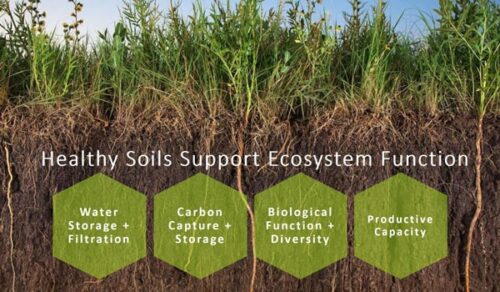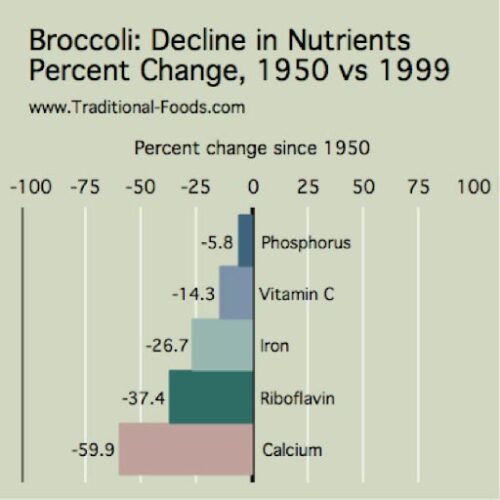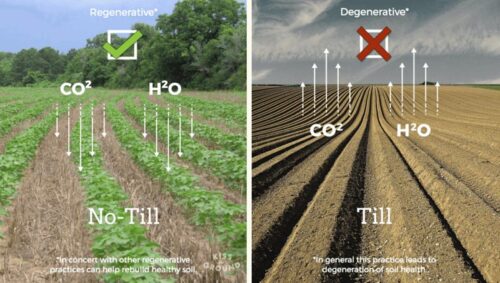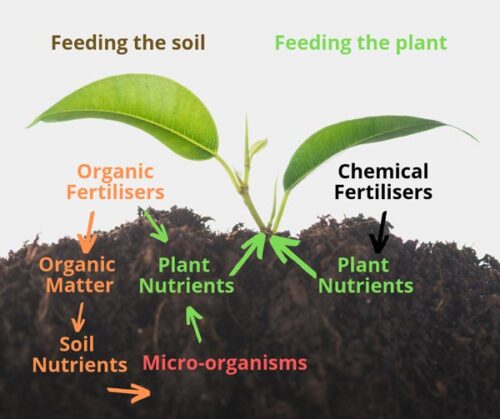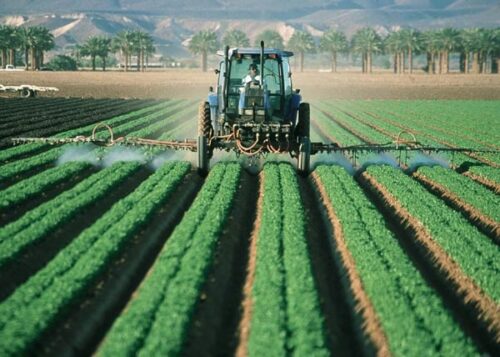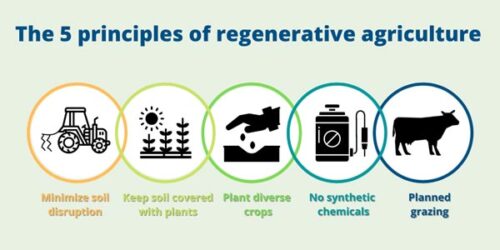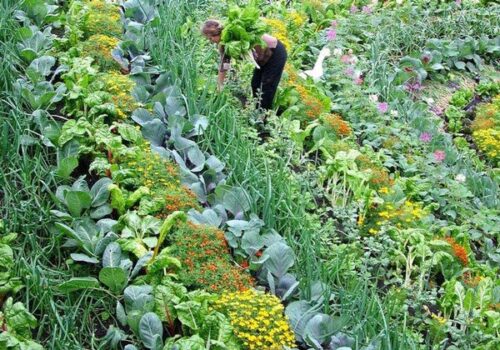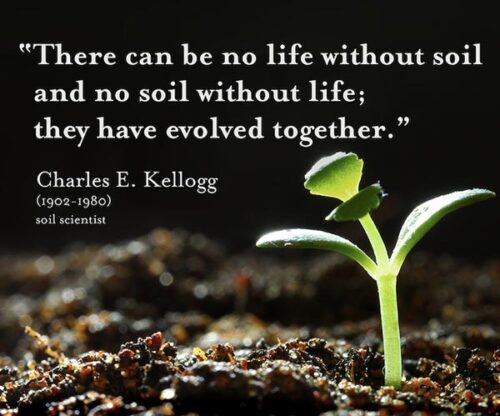Soil Health
Soil is a living organismAt first glance, the ground beneath our feet may appear to be just dirt, devoid of life. This may be true in some cases due to the past 50 years of intensive agriculture practices, but, for the most part, that “dirt” is actually soil. Soil is a living thing, made up of organic materials (both dead and living organisms), minerals, air and water. It makes up one of the Earth’s most dynamic, complex and valuable natural resources. In contrast, dirt is just displaced soil, that stuff we wash off our hands and clothes after working in a garden or playing a sports game.
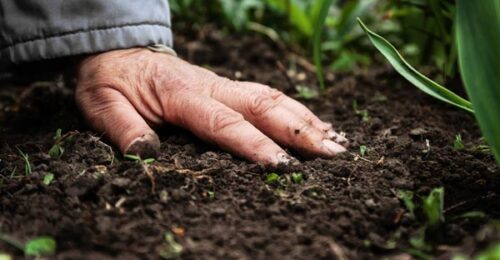
What is Soil?
A closer look reveals that soil is a vital ecosystem, teaming with life. It is the driving force behind multiple crucial chemical, physical, and biological cycling processes. Billions of bacteria, fungi, and other microbes live within the soil, existing together in a harmonious symbiotic environment. 90% of all organisms on the planet live in the soil. In fact, there are actually more microorganisms in a teaspoon of healthy soil than there are people on Earth, with these microorganisms consisting of bacteria, fungi, insects, invertebrates and other microbes.

Pictured above are just a small sampling of life forms that exist within soil.
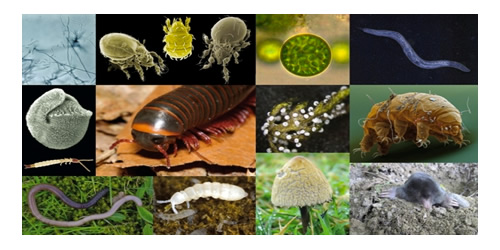
Pictured above are just a small sampling of life forms that exist within soil.
Soil health refers to the capacity of soil to be able to function as a healthy ecosystem that promotes plant growth and sustains both animals and humans. Healthy soil provides us with countless ecosystem services, such as filtering water, regulating both our local and global climates, sustaining plant and animal life, filtering and buffering potential pollutants, and cycling nutrients. These properties result in clean water and air, plentiful food crops and thriving forest ecosystems, productive grazing lands, diverse wildlife and beautiful, bountiful landscapes.
Just as the microbes in our bodies are essential for maintaining our health, microbes in the soil are instrumental for soil health and productivity. Soil microbes are the driving force of plant productivity through their ability to decompose organic matter, cycle nutrients, and fertilize soil. Without these functions, life on Earth simply couldn’t exist, and without widespread healthy productive soil, growing enough food for the ever-increasing human population will not be possible.
Why Should You Care About Soil?
Not only do soils produce our food, contain a quarter of the world’s biodiversity, mitigate climate change, and filter our water, but soil itself also impacts our own health in multiple ways. In terms of food, the nutrient density of produce is a direct reflection of the health of the soil in which it was grown.
Just as we rely on a healthy and diverse diet in order to provide our bodies with sufficient nutrients, plants rely on soil to obtain their dietary needs. The increase of industrial farming and its practices that strip the soil have led to a tangible effect on produce, with fruits and vegetables from 1999 compared to those from 1950 having up to 38% less vitamins and minerals. Industrial farms attempt to make up for soil nutrient loss by artificially adding in the three major nutrients necessary for plant growth – nitrogen, phosphorus, and potassium. However, trace minerals, which are not replaced, are essential for our physical health, especially for proper functioning of our immune system.
Furthermore, green spaces and gardens that are fueled by healthy soil have been shown to improve quality of life at all ages, leading to decreases in mental health issues such as depression, chronic and acute stress and anxiety, improvement in patients with diabetes, heart disease and high blood pressure, and a significant reduction in the onset of immobility and dementia in the elderly. Research has even shown that a bacterium found in soil, known as M. vaccae, actually mirrors the effects of antidepressant medications in that exposure leads to serotonin production, therefore making us happier.
All of these benefits, from nutrient dense vegetables to relief from mental health issues and healthy aging, rely not only on the continued existence of topsoil, but on a thriving soil ecosystem with a diverse microbial community. We need healthy soil in all aspects of our life, so it is our responsibility to become educated and take action to protect the world’s soil from further degradation.
What is Happening to the World’s Soils?
About 95% of our food is either directly or indirectly produced from soil, so current widespread soil degradation and desertification rates are a serious threat to the future of humanity. Soil degradation is the loss of soil fertility, biodiversity, and productivity, or the inability of soil to continue providing its ecosystem services. This occurs when organic matter and carbon content decrease, which leads to deterioration of the microbial community as well as the ability of that soil to hold water.
Soil erosion, which leads to overall soil degradation, refers to loss of topsoil and soil nutrients. Desertification refers to a wider scale land degradation that occurs when once fertile land loses its capacity for biological productivity. Desertified land can no longer provide ecosystem services such as producing food. The major cause of desertification is unsustainable agriculture practices, including intensive farming and overgrazing.
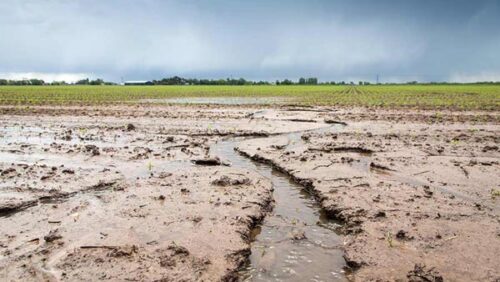
Eroded soil following intensive agriculture
The FAO states that intensive industrial agriculture practices are depleting soils of life and ‘jeopardizing the soils’ productive capacity and ability to meet the needs of future generations.’ While soils are technically considered a renewable resource as they are constantly forming, this process occurs at exceptionally slow rates. Specifically, a UN official stated that creating three centimeters of topsoil – the outermost layer of soil that contains the majority of life and biological activity – takes roughly 1,000 years, and if current rates of soil erosion continue then the world’s topsoil could disappear within 60 years. This means that there are 60 crop harvests left before the planet’s topsoil is gone, unless significant changes are made to rebuild degraded soil and once productive land.
What Agriculture Practices Damage Soil?
The major causes of soil degradation are the industrial agriculture practices that dominate farms across the country. Specifically, the following practices are the most detrimental: intensive soil tillage, livestock overgrazing, mass spraying of pesticides, herbicides and fungicides, lack of crop rotation and cover cropping between yields, and a general lack of diversity in the production system.
Tillage, in which soil is prepared for cultivation by mechanical manipulation, is one of the strongest catalysts of degradation as it physically breaks up and dries out the underground habitats that soil microorganisms reside in and significantly decreases soil organic matter and carbon content. As a result, microbes no longer have the food source they need to perform essential ecosystem services, and the organic carbon that had been stored within the soil gets released to the atmosphere where it contributes to climate change.
Intensive livestock overgrazing means that livestock’s consumption of vegetation surpasses the ability of the vegetation to regrow and recover, which leads to soil being exposed. Exposed soil gets eroded by wind and water, while soil compaction due to livestock walking on the land decreases the soil’s ability to hold water; this then decreases plant production. Lastly, overgrazing on a long term scale leads to less plant biomass available to be broken down, reducing organic matter content, water storage capacity and further increasing erosion.
The heavy use of pesticides, herbicides, insecticides, fungicides, and synthetic fertilizers does not only kill microorganisms that cause harm to plants – it also kills those that are beneficial. Therefore, treatment with these chemicals leads to a decrease in the soil microbes and mycorrhizal fungi that are essential to the health of both the soil and the plants growing within it. Furthermore, runoff of these chemicals leads to surface and groundwater contamination and resulting negative effects on both organisms within aquatic ecosystems as well as human health due to contaminated drinking water.
A lack of crop rotation, cover cropping and diversity lead to deterioration of soil nutrients and microbial communities as well as the buildup of plant pathogens. Leaving soil barren rather than planting cover crops fails to protect land in between harvests from further erosion (from wind, rain, etc.), and means that over time, organic matter will decrease as the soil is not given biomass for microbes to break down and replace the organic matter that was used up in the process of plant production. A lack of crop rotation and diversity from monoculture farming depletes soil nutrients, increases reliance on synthetic fertilizers, and makes the crop more susceptible to pests and diseases which must be treated with even more chemicals.
All of these factors combine on a long term scale and lead to what is referred to as the ‘degradation spiral,’ a series of compounding effects leading to severe soil erosion and land degradation.
How Can Soil Health be Improved?
Luckily, soil health can be built back up through regenerative agriculture. Regenerative agriculture can be defined as farming and grazing practices that “reverse climate change by rebuilding soil organic matter and restoring degraded soil biodiversity – resulting in both carbon drawdown and improving the water cycle.” Regenerative agriculture practices that build up soil health include the following, essentially the opposite of the practices described in the previous section.
- Decreasing soil disturbance through the use of no-tillage systems: Various established practices can be used as an alternative to tilling fields, with the potential for farmers to save money in the long-run as soil health increases and less inputs are needed.
- Practicing crop rotation and cover cropping: These lead to less erosion, more available soil nutrients, increased natural biological control of pests, and increased resistance to disease.
- Diversifying production systems through the practice of polyculture farming: Intercropping – planting multiple types of crops together in close proximity – leads to healthier microbial communities, more resistance to pathogens and pests, reduction in weed growth and complementary sharing of nutrients and services between the different types of plants, which benefits the system as a whole.
- Integrating livestock into crop systems: This allows manure to act as a natural fertilizer, therefore decreasing dependence on synthetic fertilizers.
- Controlled livestock grazing: Rotational, adaptive grazing mimics migratory patterns of ruminant herds in the wild, ensuring that no section of pasture becomes overgrazed or compacted. This practice rebuilds soil health through manure and sequesters carbon from the atmosphere.
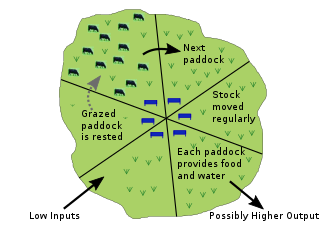
What You Can Do!
- Educate yourself (and others)! Watch the new Netflix documentary “Kiss the Ground” to learn more about how soil and regenerative agriculture can mitigate the effects of climate change and rebuild degraded soils
- Become a soil advocate by enrolling in their online training course, read through this list of educational resources including a free purchasing guide to learn how to make conscious purchasing decisions and eat in a way that betters the climate,
- Take action by contacting your government officials about soil policy
- Support regenerative farmers and ranchers! Check out the regenerative farm map to search by product and location to find producers practicing soil-friendly methods
- Start your own regenerative garden! The more local, the more sustainable – and how much more local can you get than your own backyard or community garden that allows you to control all aspects of production? Sustainable America has good tips for beginner carbon farming, and Honestly Modern has some more easy ways to incorporate regenerative practices
At the end of the day, soil is our ultimate source of health and truly dictates our livelihood and the future of our planet.

